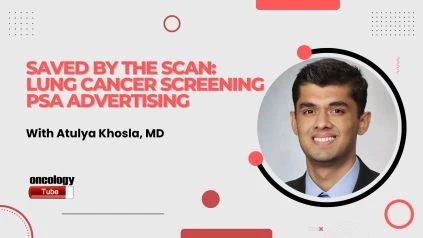Dr. Atulya Khosla discussed the “Saved by the Scan” public service advertising program initiated by the American Lung Association (ALA) and Baptist Health South Florida (BHSF). The program aimed to address low lung cancer screening rates among high-risk populations, particularly racial and ethnic minorities, with a focus on Hispanics in South Florida.
To tackle this issue, the program utilized a multipronged approach, employing both traditional and digital communication modalities. Traditional methods included posters, billboards, and news channels, while newer channels such as social media and emails were also utilized. Approximately 130,000 emails were sent, with a 27% open rate and a click-through rate of 6.4%.
The program followed the guidelines of the United States Preventive Services Task Force (USPSTF) for lung cancer screening, recommending it for individuals aged 50 to 80 who have smoked for more than 20 pack years or have quit within the past 15 years. Key performance indicators (KPIs) were employed to measure the program’s reach and impact.
The program’s communication modalities encompassed both traditional and digital platforms. Traditional methods included posters, billboards, while digital channels involved emails and social media. The lung cancer screening rate had fallen by 20% during the pandemic but increased to 61.16% in 2021, surpassing pre-COVID rates by 21.9%.
KPIs were used to track the program’s reach and impact. Among the 130,000 emails sent, the click-through rate was approximately 6.4%, with 27% of the emails being opened and read.
From 2019 to 2021, the number of lung cancer screenings at BHSF changed significantly. The screening rate dropped by 30% during the pandemic but experienced a 61.1% increase in 2021 compared to the pandemic levels, resulting in an overall increase of 20% over pre-COVID rates.
The program’s outreach efforts through traditional media channels, including newspapers and billboards, yielded positive results. Around 337 individuals were screened as a result, with 69% of them attributable to emails and 21% to social media outreach.
In terms of digital media strategies, the program achieved notable engagement rates and effectiveness. Out of the 337 individuals screened, 69% were reached through email outreach, while 21% were reached through social media efforts.
Through the program’s digital media efforts, a total of 337 individuals were estimated to have been converted to lung cancer screenings. Among them, 69% were reached via email and 31% through social media outreach.
Based on the success of the program in South Florida, several recommendations can be made for scaling and implementing similar initiatives on a nationwide level. These include adapting the program to cultural sensitivities, such as providing outreach in multiple languages, involving various institutions to enhance accessibility and availability of screenings, and encouraging collaboration among stakeholders. By implementing these recommendations, similar programs can make a substantial impact on lung cancer screening rates across the country.

